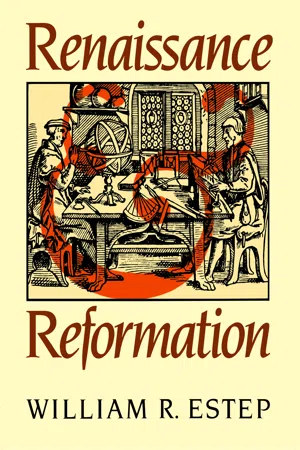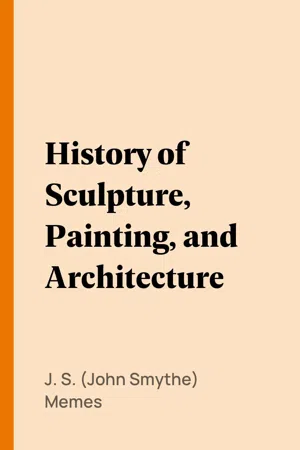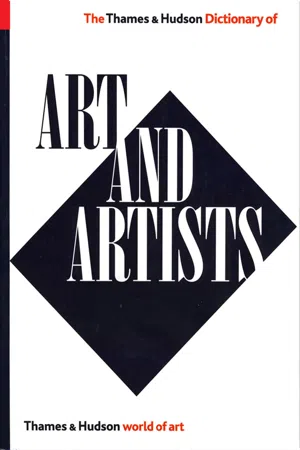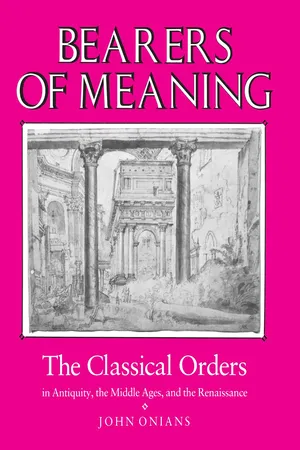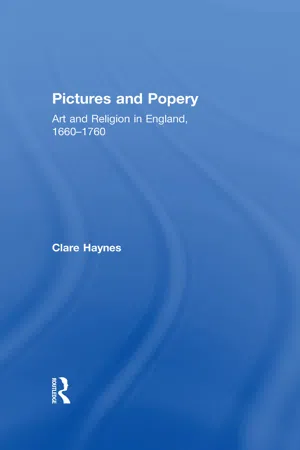History
Raphael Painter
Raphael was an Italian painter and architect of the High Renaissance. He is best known for his frescoes and paintings, including the famous "School of Athens" in the Vatican. His work is characterized by its harmony, balance, and idealized forms, and he is considered one of the greatest artists of all time.
Written by Perlego with AI-assistance
Related key terms
6 Key excerpts on "Raphael Painter"
- eBook - ePub
- William R. Estep(Author)
- 1986(Publication Date)
- Eerdmans(Publisher)
The expression on each face in reaction to Christ’s statement that one of his disciples would betray him reflects a tense moment caught at just the right instant by the artist’s imagination. And Judas is pictured on the same side of the table as Jesus, a reversal of the positions envisioned by medieval artists. If Leonardo had done no other painting, this one would have insured his fame. Perhaps in the end, an embittered and frustrated genius, he came to realize that his paintings alone had value, for when he left Italy for France, he took several with him: the Christ Child, John the Baptist, Anne, Mary, and probably the Mona Lisa. Raphael Sanzio (1483-1520) Raphael, acclaimed by a host of critics as the greatest painter of all time, represents Renaissance art at the pinnacle of its development. Raphael’s father was also a painter, but he died when his son was only eleven years old. Yet before his father’s death the young boy had already embarked upon his lifelong career. For five years he studied with Pietro Perugino, who, upon seeing the youngster’s drawings, is reported to have said, “Let him be my pupil! He will soon become my master.” The next four years Raphael spent studying with the Florentine masters, Leonardo da Vinci and Michelangelo, while perfecting his own technique. Julius II, who was always on the lookout for promising young artists, invited Raphael to come to Rome in the service of the church. It was here that he produced his greatest works of art. Raphael was known for his ability to combine pagan and religious elements into a most pleasing and popular art form. Symbolic of his style are the Madonna compositions, which may be seen in some of the world’s great art museums. His mistress, in true Renaissance fashion, became the model for these pictures. Of these, the Sistine Madonna is generally recognized as his masterpiece - eBook - ePub
- J. S. (John Smythe) Memes(Author)
- 2019(Publication Date)
- Perlego(Publisher)
During the same laborious period were produced those exquisite paintings in oil, which have chiefly contributed to spread his fame beyond Italy. Of these the best, the most wonderful, though in slight respects not the most perfect, is the Transfiguration—the last bequeathment of his genius to the arts and to posterity, for he died within a few days after it was completed. As Raphael in these works, no painter has ever done so much for the real excellence of the art, nor, in the principles upon which they are conducted, has placed improvement on precepts so pure, so unerring. All that imagination could lend to a strictly imitative art he has added, yet has infused into its creations the warmest sensibilities of life; to nature he has given all that grace and fancy can bestow, consistent with the sweetest of all charms—leaving her nature still. On this account is Raphael, of all great names in art, the safest to adopt as the guide of taste and practice. For were the most decided admirer of system merely to copy, he would quickly find himself constrained to become the disciple of reality. True, we discover no mixed modes of nature, such as impede her energies and cloud her beauties in ordinary life; yet the tranquil loveliness—the sinless beauty—the noble feeling of the representation—has nothing of the cold and merely imaginative. This, indeed, constitutes the great charm of Raphael's grace, that neither in form nor expression is it abstract; its power of moving is acquired directly from human sympathy - Herbert Read, Nikos Stangos(Authors)
- 2012(Publication Date)
- Thames and Hudson Ltd(Publisher)
Pop artist. In the early 1960s, comic book characters provided his images; subsequently he did paintings of pin-up girls of increasing eroticism.Ramsay Allan (1713–84). Scottish portrait painter. After studying in Italy he settled in London and became painter to George III. His most notable portraits are of women; in them he could give free expression to the grace and delicacy characteristic of his style, e.g. his painting of his 2nd wife, Margaret. An important male portrait is that of the philosopher Rousseau. In the 1760s he delegated most of his work to assistants and joined the literary group round Dr Samuel Johnson.Raphael (1483–1520). Raffaello Sanzio, Italian painter, with Michelangelo and Leonardo da Vinci one of the three masters of the High Renaissance. Born at Urbino, already a flourishing centre of the arts, and the son of a painter, R. was brought into contact with the highest artistic achievements from childhood. He was trained by Perugino, who was then at the height of his own career. R.’s precocious talent was recognized long before he was 20 and his early Vision of a Knight shows an astonishing maturity. R. was astute enough to realize that the art of Leonardo and Michelangelo was transforming the whole conception of painting and in 1504 he went to Florence to study it. Betrothal of the Virgin (1504) shows the transition between the teaching of Perugino and the assertion of the new influences. R.’s colour and the emotional qualities of his work always remained within the tradition of Central Italian painting, while his sense of composition and the dynamic power of his draughtsmanship were learned from the Florentines. Early portraits too, show how much he owed to Leonardo’s Mona Lisa, e.g. Maddalena Doni. In his Madonnas, e.g. La Bella Jardinière (c. 1520), the influence of Fra Bartolommeo is combined with that of Leonardo’s drawings of St Anne with the Madonna and Child, e.g. Madonna with the Goldfinch and Madonna del Granduca. By 1508 R. was receiving offers from both the French court and the Pope; late in that year he went to Rome to take part in the grandiose decorative schemes of Pope Julius II for the new Papal apartments in the Vatican. R.’s response to the enormous artistic challenge his part of the scheme presented is also one of those astonishing ‘leaps forward’ in art history and is matched, perhaps, only by Masaccio’s painting of the frescoes in the Carmine church, Florence, 100 years earlier, and the exactly contemporary (1508–12) frescoes of Michelangelo in the Sistine Chapel. When he found himself the peer and rival of Michelangelo R. was 26. Considered for their composition alone, The School of Athens, Parnassus and Disputà (Disputation concerning the Holy Sacrament) are probably supreme in art. They were immediately studied by every artist in Rome and remained an ‘art school in themselves’. At the same time R. was painting portraits such as the celebrated Young Cardinal. The next 8 years were, indeed, a record of astonishing achievement: R. and his assistants continued the Vatican frescoes – in the Stanza d’Eliodoro there is a richer use of colour, esp. in The Mass of Bolsena; while in the Stanza dell’ Incendio del Borgo the almost forced dramatic quality shows his study of the Michelangelo frescoes. In 1514 R. was-preferred to Michelangelo by the new Pope, Leo X, as successor to Bramante, architect-in-charge of St Peter’s. In 1518 he was to be made, with A. da Sangallo, ‘Superintendent of the Streets of Rome’, which made him responsible for town planning as well as for the day-to-day upkeep of the entire city. Before this, he had decorated the Farnesina Villa (1514). The famous Galatea is, with Botticelli’s Venus and Primavera, the supreme Renaissance evocation of the classical ‘Golden Age’; it is also unmatched in its interpretation of spontaneous and graceful female action. The classical themes remind one too, that R. was also responsible for the Papal colls of antiquities. In 1515–16, R. drew the cartoons for the tapestries which, woven in Flanders, were hung in the Sistine Chapel. 7 of the cartoons are preserved. Yet he also found time to paint altarpieces, e.g. The Sistine Madonna and The Transfiguration, a painting left unfinished when he died of fever. It was completed by Giulio Romano- eBook - ePub
- Morris Kline(Author)
- 2013(Publication Date)
- Dover Publications(Publisher)
Fig. 10–16 ) he boldly tackles an enormous scene encompassing a vast number of people within a magnificent architectural setting. The portrayal of depth, the harmonious organization, coherence, and exactness of proportions achieved despite the difficulty of the undertaking are extraordinary. This picture, especially, shows how perspective unifies a composition and ties figures at the sides to the central theme.The history of this painting is of interest. Pope Julius II (1443–1513) was impressed with ancient learning and regarded Christianity as the climax of Jewish religious thought and Greek philosophy. He wished to have his idea embodied in paintings and commissioned both Michelangelo and Raphael to develop this theme. Michelangelo treated it in his frescoes on the ceiling of the Sistine Chapel, where he shows the human race led to Christ through a long line of Jewish prophets and pagan sibyls. Raphael executed the same theme in a somewhat different manner. In four frescoes which cover the walls of the Pope’s principal official room, the Camera della Segnatura, he teaches that the human soul is to aspire to God through each of its faculties: reason, the artistic capacity, the sense of order and good government, and the religious spirit. “The School of Athens” glorifies reason and naturally exhibits the people who excelled in the intellectual sphere. Plato and Aristotle are the central figures. Plato points upward to the eternal ideas and Aristotle down to the earth as the field of experience. At Plato’s left is Socrates. In the left foreground Pythagoras writes in a book. The right foreground shows the bald-headed Euclid; Archimedes stoops to demonstrate a theorem; Ptolemy holds up a sphere. All the way to the right is Raphael himself.Fig. 10–16. Raphael: School of Athens . Vatican.Fig. 10–17. Raphael: Fire in the Borgo - eBook - ePub
Bearers of Meaning
The Classical Orders in Antiquity, the Middle Ages, and the Renaissance
- John Onians(Author)
- 2020(Publication Date)
- Princeton University Press(Publisher)
Some paintings can be understood purely from an internal analysis, as they stand; these require completion by the viewer. Raphael and Peruzzi start our interpretation in the right direction, but it is we who must think it through. Such works, like those of other High Renaissance artists, demand a level of participation and response which was usual in the context of arts such as music and poetry but new in the context of painting, sculpture, or architecture. - eBook - ePub
Pictures and Popery
Art and Religion in England, 1660–1760
- Clare Haynes(Author)
- 2017(Publication Date)
- Routledge(Publisher)
Chapter 3Raphael’s Religion: The Interpretation of Catholic Pictures in EnglandBy the 1720s, the Raphael Cartoons had become almost iconic images to the English, considered close to perfect works by a near perfect artist.1 The seven paintings had enjoyed a very high reputation throughout Europe since Raphael (1483–1520) had painted them and they were known both in the form of tapestries and by the famous engravings by Marcantonio Raimondi (c .1480–c .1534), among others.2 However, it was not until the very end of the seventeenth century that their status as works of art became a matter of national pride in England and this happened despite the fact that the Cartoons were conceived of, and recognized as, works of Catholic apologetics. In this chapter we will explore how this was achieved. In addition to discovering how these specific works were approached, we will be able to see how alien subject matter was managed in practice by spectators of Catholic pictures, particularly in relation to questions of national identity. John Shearman was, I believe, the first to note the status of the Cartoons in English culture, happily describing Raphael as having being made an ‘honorary Englishman’ during this period.3 It is the ‘Englishing’ of Raphael that this chapter discusses.The Cartoons were influential in England as works of art, but they also functioned, surprisingly, as religious images and as a symbol of the cultural, and therefore, to some extent, the political health of the nation.4 During this period, despite fashions for chinoiserie, for example, and for looking with wonder at objects of natural and ‘artificial’ curiosity, the model of excellence in the visual arts was very narrow.5 Therefore, in the context of a country seeking to assert its political supremacy, the ownership of such major works of the pan-European canon was likely to become invested with deep significance. Indeed, the Cartoons had a life outside the narrow circle of the virtuosi, which was due, however, to the authority with which the Cartoons were invested by this group. This status was multifaceted: they were used to decorate homes, to ornament Bibles and to embellish ephemeral objects such as this sheet [Plate 9], which was intended as a model to copy from to develop writing skills. So significant were the Cartoons that they can be seen as a nexus through which ideas about society, religion, art and history were mediated. The complex contradictions that existed during this period between cultural priorities and those of religion, and the tools that were developed to deal with them, are exposed here. In this chapter we will explore what was a process of transformation, by which a piece of Catholic apologia was made available for use as, as one eighteenth-century politician put it, an ‘invaluable national treasure’.6
Index pages curate the most relevant extracts from our library of academic textbooks. They’ve been created using an in-house natural language model (NLM), each adding context and meaning to key research topics.
